
One of the most significant barriers to fluent reading and good comprehension is lack of ‘automaticity’ – the ability to quickly and accurately identify letters, letter-sound correspondences and isolated words. Children who have not developed automaticity in decoding by the beginning of Year 2 are at risk for reading failure (Berninger et al., 2006). In this blog I will talk about how you can help a child to achieve that vital automaticity.
When we achieve automaticity in a skill, we no longer have to consciously think about each individual step in the process. Instead, we can do it without effort, sometimes even while consciously thinking about something else. We can activate or perform the skill quickly. Automatic skilled performance develops with extended practice after a high level of accuracy has been reached.
Do you remember when you were learning to drive a car? You had to think about every action you made. You probably drove slowly in order to be able to process simultaneous actions and information. After direct instruction and repeated, focused practice, it became possible to drive without consciously thinking about each action, even to ‘have a quiet word’ with the fighting kids in the back seat and drive, simultaneously!
 When a driver achieves automaticity, new and/or incoming information
When a driver achieves automaticity, new and/or incoming information Reading, like driving, is a complex process. It requires two key separate but inter-related skills – word identification and comprehension. In reading, automaticity is the ability to rapidly, effortlessly and accurately recognise or decode words. ‘Expert’ readers are able to decode words with minimal attention to the activity of decoding. There are few words they must sound out or closely examine, and they can instead accurately recognise words on sight. The ‘L plate’ or ‘novice’ reader usually lacks automaticity, often reading slowly, with effort, and often making errors.
At any given time, we have a finite amount of cognitive energy to give to an activity or process. When we achieve automaticity in lower-level skills (e.g. word recognition), we free up working memory for more complex, higher-level skills (e.g. comprehension). The slower word identification is, the longer previously read letter-sound correspondences and words have to be held in working memory. Working memory may become overloaded by lack of automaticity.

Comprehension may be reduced, not because the reader is unable to understand the text but because too much cognitive energy has had to be put into decoding. Cognitive load is reduced as automaticity increases.
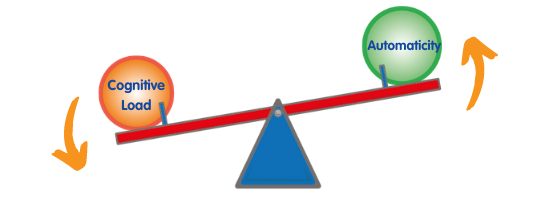
The faster text is processed, the easier it is to access meaning directly and integrate new information with prior knowledge. Consequently, automaticity has a very significant impact on reading comprehension.
Automaticity also plays a key role in the oral reading fluency which is required to effectively share the written word with an audience in the classroom, workplace, home etc. Given the importance of automaticity, educators should ensure that the novice reader develops automaticity at the letter, word, and text level to decrease cognitive load and increase comprehension.
Automaticity is a prerequisite to fluency. Fluency requires not only automaticity and accuracy in word identification but also prosody (intonation, expression and phrasing) at the text level. For more information, have a look at my blog post on fluency.
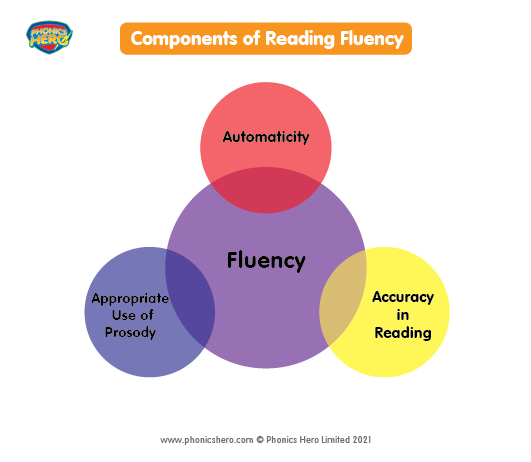 Diagram adapted from Oregon K-12 Professional Development
Diagram adapted from Oregon K-12 Professional Development It goes without saying that automaticity in any skill is the product of instruction and multiple practice opportunities.

These are the steps to developing automaticity:
Explicit, systematic, highly structured, step-by-step, carefully sequenced, cumulative, multisensory instruction supports and develops automaticity. Implicit, incidental, haphazard instruction that involves only one sense (e.g. vision) and leaves out important steps does not. There is a plethora of research indicating that systematic synthetic phonics instruction is the most effective form of reading instruction for the novice reader. If you’d like to learn more, you can read these case studies from schools using Phonics Hero across the globe:
Accuracy is a prerequisite skill for automatic word recognition, therefore teachers must dedicate significant amounts of instructional time to developing accuracy in each of the following components of decoding:
Accuracy is best achieved through appropriate instruction that begins at the student’s point of need, followed by frequent (daily) focused practice with direct corrective feedback. 90-96% word recognition accuracy is equated with ability to read at instructional level, 97-100% word recognition accuracy with ability to read at independent level and less than 90% accuracy is equated with frustration level in reading.
Skills and knowledge learned to the level of automaticity are better retained in long-term memory than skills and knowledge developed only to high accuracy. The goal, then, is mastery. ‘Mastery’ is defined as ‘effective transfer of learning in authentic and worthy performance.’ Students should not be considered proficient readers until they can read accurately and with comprehension. This is why accuracy in reading of words in isolation is an insufficient measure of automaticity in reading.
A novice reader may able to decode a passage of text, but if their working memory is devoted completely to decoding they won’t be able to extract meaning from the text or visualise the given scene. And so the student must be given multiple opportunities to apply his/her decoding skills to the reading of decodable text and demonstrate comprehension of the text read.
Practice should be continued beyond demonstration of mastery—a process called ‘overlearning’. Just as a professional pianist doesn’t stop practising a piece once it has been played correctly, a reader should not stop practise reading words once they are read correctly. The average reader needs to see a word 4-14 times before it can be read with automaticity. A struggling learner may need to see it 40 times. Extensive exposure to print is vital – the more reading a student does, the more often specific words are seen, the more automatically words will be recognised. The challenge, of course, is finding ways of making overlearning enjoyable.
The principles of systematic synthetic phonics instruction underpin all of Phonics Hero’s products. The Phonics Lessons cover each of the 44 phonemes of English, using over 3,700 decodable words and 2,400 sentences with pronunciation videos, fluency drills and phonics games to give you the structure and resources to teach phonics explicitly and systematically.
The most commonly used representations of sounds are taught first. Students are taught how these sounds can be blended to form many words. They are moved through ‘levels’ of the alphabet code, from the simple to the complex, in a systematic way. Differentiation is provided to ensure that each student is working at the appropriate level.
The Phonics Hero lessons and games systematically teach students all aspects of decoding: letter-sound correspondence, blending and reading of both regular and irregular words. The Child Accounts contains 850 enjoyable skill-based games that encourage daily practice, at school and home, developing the accuracy needed for automaticity.
The games can be used for consolidation and revision in the classroom, by individual students or in a group with an interactive whiteboard. A Placement Test is provided to ensure that the correct starting point is chosen for each student. Errors are corrected sensitively and immediately. The performance of a student on each game is automatically recorded so that the teacher can monitor the accuracy level attained by a student in live reports. Pre- and Post- assessment paper-based tools are also provided to help the teacher determine accuracy levels.
Once the student has demonstrated accuracy in blending sounds and reading isolated words, (s)he is then required to apply decoding skills to the reading of captions and sentences (by using the toggle to switch to sentences in Phonics Lessons and ‘Step 6’ of the Phonics Hero games). The student is asked to match captions/sentences with pictures or to complete a sentence to determine the student’s level of comprehension.
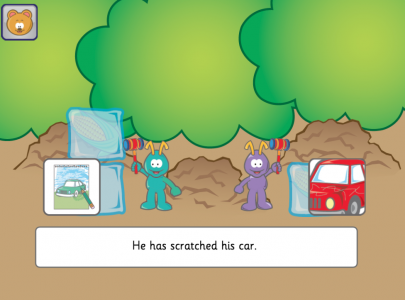 One of the many sentence games from Phonics Hero
One of the many sentence games from Phonics HeroPhonics Hero’s unique games are so attractive that students will want to play them over and over. There is no chance of the student getting bored because Phonics Hero only uses the same game, on average, 1.2 times. They are also incredibly varied thematically: monsters, princesses, animals, superheroes and more!
In addition, Phonics Hero offers 12 free phonic worksheets covering each skill for every level of the program – over 220 worksheets. It is also possible to buy packs that target specific phonemes e.g. the R-controlled Vowels Worksheet Activities.

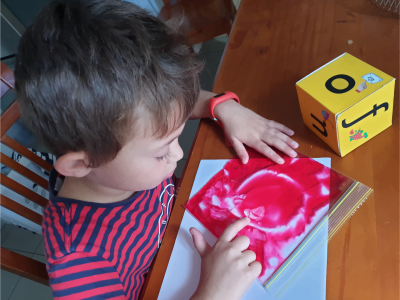
Have some fun with word-reading practice
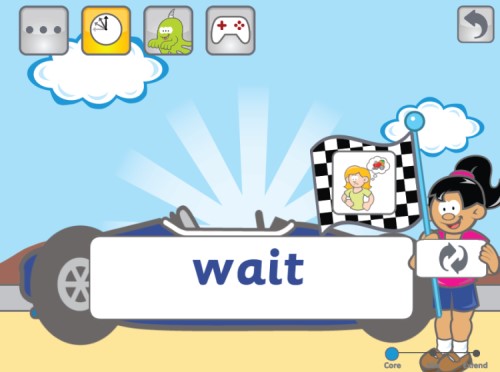 The Phonics Lessons include a Fast Read – how many words
The Phonics Lessons include a Fast Read – how many words While most students who have struggled with reading are helped by systematic synthetic phonics instruction to become accurate decoders, the development of automaticity is crucial to for every child to become a fluent, efficient reader who has full comprehension – and enjoyment – of a text. I hope that you now are more aware of the steps you can take to help children develop that automaticity on their journey to become confident, skilled readers.
‘Paths to Reading Comprehension in At-Risk Second-Grade Readers’ Virginia Berninger et al, August 2006 Journal of Learning Disabilities 39(4):334-51